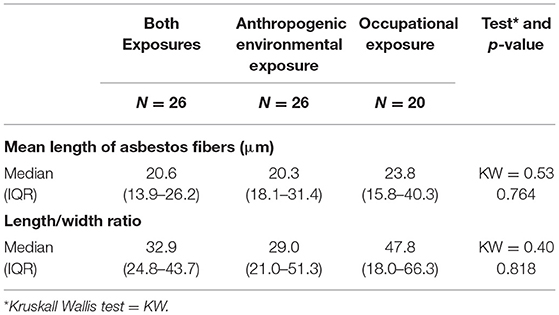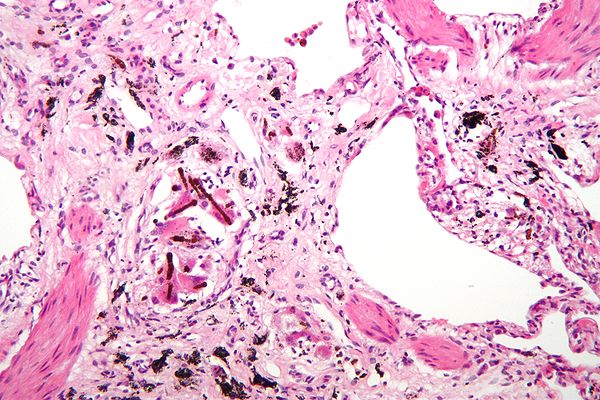Asbestosis, also known as pulmonary fibrosis caused by asbestos exposure, is a chronic lung condition that arises from prolonged inhalation of asbestos fibers. This progressive disease leads to scarring and stiffening of the lung tissue, making it difficult for individuals to breathe properly. Abbreviated as “ASB” in some medical contexts, this condition has become a significant health concern due to its association with occupational hazards and environmental exposure.

Understanding Asbestos
Asbestos refers to a group of naturally occurring minerals that were widely used in construction, manufacturing, and other industries due to their heat resistance, durability, and insulating properties. These minerals are composed of thin, needle-like fibers that can easily become airborne when disturbed. Once inhaled, these fibers lodge themselves deep within the lungs, leading to inflammation and eventual scarring.
Types of Asbestos
- Chrysotile: The most commonly used type of asbestos, often referred to as white asbestos.
- Amosite: Known for its brown color, this type was frequently used in cement sheets and thermal insulation.
- Crocidolite: Also called blue asbestos, it is considered the most hazardous due to its thin and brittle fibers.
- Tremolite and Anthophyllite: These types were less commonly used but still pose health risks.
How Asbestos Affects the Lungs
When asbestos fibers are inhaled, they penetrate the lung tissue and settle in the alveoli, which are tiny air sacs responsible for oxygen exchange. Over time, the body’s immune system attempts to break down and remove these fibers. However, asbestos is highly resistant to degradation, leading to persistent inflammation and scarring.
The Process of Lung Scarring
- Inhalation: Asbestos fibers enter the respiratory system through breathing.
- Fiber Deposition: The fibers embed themselves in the lung tissue, particularly in the lower regions.
- Inflammation: The immune system responds by sending white blood cells to the affected area, causing swelling.
- Fibrosis: Prolonged inflammation triggers the formation of scar tissue, which thickens and stiffens the lung walls.
Symptoms of Asbestos-Related Lung Disease
The symptoms of asbestosis typically develop gradually over several years or even decades after initial exposure. Early detection can be challenging because the signs often mimic those of other respiratory conditions. Common symptoms include:
- Shortness of breath, especially during physical activity
- Persistent dry cough
- Chest tightness or pain
- Crackling sounds in the lungs upon inhalation
- Unexplained weight loss
- Fatigue and weakness
Progression of Symptoms
In the early stages, individuals may only experience mild discomfort. However, as the disease progresses, the scarring becomes more extensive, leading to severe breathing difficulties and reduced lung function. Advanced cases may result in complications such as heart problems due to increased pressure in the pulmonary arteries.
Risk Factors for Asbestos Exposure
While anyone can be exposed to asbestos, certain groups are at higher risk due to their occupations or living environments. Understanding these risk factors is crucial for prevention and early intervention.
Occupational Hazards
- Construction workers who handle materials containing asbestos
- Shipyard employees involved in shipbuilding or repair
- Mechanics working on brake pads and clutches
- Miners extracting asbestos-containing minerals
- Firefighters exposed to burning buildings with asbestos components
Environmental Exposure
Besides occupational risks, people living near asbestos mines or industrial sites may inhale airborne fibers. Additionally, older homes and buildings constructed before the 1980s often contain asbestos in insulation, flooring, and roofing materials, posing a risk during renovations or demolitions.
Diagnosis of Asbestos-Related Lung Disease
Diagnosing asbestosis requires a comprehensive evaluation, including a detailed medical history, physical examination, and specialized tests. Since the symptoms are nonspecific, healthcare providers rely on various diagnostic tools to confirm the presence of asbestos-related lung damage.
Medical History and Physical Examination
Doctors will inquire about past occupational and environmental exposures to asbestos. They may also listen to the lungs using a stethoscope to detect abnormal sounds, such as crackles, which are indicative of fibrosis.
Imaging Tests
- Chest X-Ray: Reveals patterns of scarring and thickening in the lung tissue.
- Computed Tomography (CT) Scan: Provides a more detailed view of the lungs, helping identify early signs of fibrosis.
Pulmonary Function Tests
These tests measure how well the lungs are functioning. Reduced lung capacity and impaired gas exchange are common findings in individuals with asbestosis.
Treatment Options for Asbestos-Related Lung Disease
Currently, there is no cure for asbestosis. Treatment focuses on managing symptoms, slowing disease progression, and improving quality of life. A multidisciplinary approach involving medications, therapies, and lifestyle changes is often recommended.
Medications
- Bronchodilators: Help relax the muscles around the airways, making breathing easier.
- Anti-inflammatory Drugs: Reduce inflammation in the lungs.
- Oxygen Therapy: Provides supplemental oxygen to alleviate shortness of breath.
Pulmonary Rehabilitation
This program includes exercises, education, and counseling to enhance lung function and overall well-being. Participants learn techniques to conserve energy and manage daily activities despite their condition.
Lifestyle Modifications
- Avoiding further exposure to asbestos
- Quitting smoking to prevent additional lung damage
- Maintaining a healthy diet and staying physically active
Preventing Asbestos Exposure
Prevention is the most effective way to combat asbestosis. Employers, workers, and the general public must take proactive measures to minimize exposure risks.
Regulations and Guidelines
Governments worldwide have implemented strict regulations to limit the use of asbestos and protect workers. These include guidelines for safe handling, removal, and disposal of asbestos-containing materials.
Safe Practices in the Workplace
- Using protective equipment, such as masks and respirators
- Ensuring proper ventilation in areas where asbestos is present
- Training employees on the dangers of asbestos and safe work practices
Public Awareness and Education
Educating communities about the risks of asbestos exposure is essential for prevention. Homeowners should be aware of potential asbestos hazards in older buildings and seek professional assistance for inspections and abatement.




